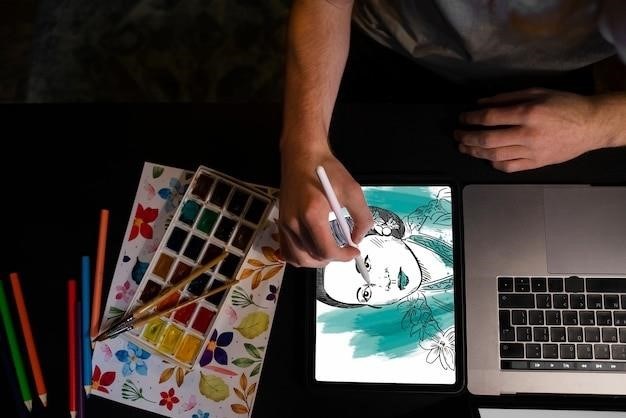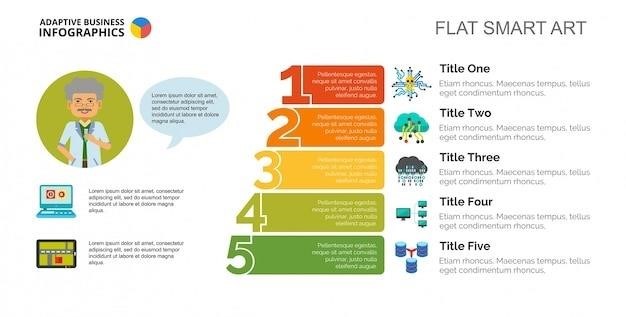Tutorials in Introductory Physics are a series of physics tutorials designed by a leading physics education research group. These tutorials emphasize the development of concepts and scientific reasoning skills, focusing on common conceptual and reasoning difficulties. They cover a range of topics in Mechanics, Electricity and Magnetism, and Waves and Optics, and are designed to help students develop a deeper understanding of physics.

Introduction
Introductory physics courses are often challenging for students, as they require a fundamental shift in thinking from everyday experiences to the rigorous language and abstract concepts of physics. Traditional lecture-based approaches, while effective in conveying information, can struggle to engage students in active learning and develop their problem-solving skills. To address these challenges, Tutorials in Introductory Physics emerged as an innovative pedagogical approach. These tutorials, developed by the Physics Education Group at the University of Washington, are designed to provide students with a structured and interactive learning experience that fosters conceptual understanding and critical thinking.
Tutorials in Introductory Physics are a departure from traditional homework assignments, emphasizing collaborative learning and guided inquiry. They encourage students to engage with physics concepts through hands-on activities, discussions, and problem-solving in small groups. This approach aims to help students overcome common misconceptions, develop deeper understanding, and build confidence in applying physics principles to real-world situations.
This series of tutorials has been widely adopted by educators across various institutions, becoming a valuable resource for enhancing introductory physics instruction. The success of Tutorials in Introductory Physics has been attributed to their focus on active learning, guided inquiry, and addressing common student difficulties, resulting in improved student learning outcomes and a more engaging and effective learning experience.
History and Development
The development of Tutorials in Introductory Physics can be traced back to the pioneering work of Lillian C. McDermott, a renowned physics education researcher at the University of Washington. McDermott, along with her colleagues, recognized the limitations of traditional lecture-based instruction in promoting deep understanding of physics concepts. They observed that students often struggled with fundamental ideas, even after successfully completing textbook problems. This led them to embark on a research-based approach to develop a more effective pedagogy for introductory physics.
The early 1980s saw the emergence of the Physics Education Group at the University of Washington, which focused on investigating student learning in physics and developing innovative teaching methods. This group conducted extensive research on student misconceptions, identifying common difficulties students faced in understanding fundamental physics concepts. Their findings led to the development of the first Tutorials in Introductory Physics, which were designed to address these specific misconceptions and promote deeper conceptual understanding.
These early tutorials were rigorously tested and refined through years of classroom implementation and research. The process involved careful observation of student interactions, analysis of student responses, and continuous revision of the tutorials to ensure their effectiveness in facilitating student learning. This iterative process of development and refinement has been instrumental in the evolution and widespread adoption of Tutorials in Introductory Physics.
Purpose and Scope
Tutorials in Introductory Physics aim to address a fundamental challenge in physics education⁚ the gap between students’ apparent understanding of physics concepts and their ability to apply those concepts in new and challenging situations. The tutorials are designed to promote a deeper understanding of fundamental physics principles and to develop students’ scientific reasoning skills, going beyond the rote memorization of formulas and equations.
These tutorials are intended for use in introductory physics courses at both the high school and college levels. They are particularly valuable for students who are encountering physics for the first time, as they provide a structured and engaging approach to learning the subject. The scope of the tutorials encompasses a wide range of topics covered in introductory physics, including mechanics, electricity and magnetism, waves, optics, and modern physics.
The tutorials are not intended to replace traditional lectures or textbooks. Instead, they complement these traditional methods by providing a hands-on, interactive learning experience that encourages students to actively engage with the material and develop their problem-solving abilities. The tutorials are designed to be used in a variety of settings, including small-group discussions, individual study, and online learning platforms.
Key Features
Tutorials in Introductory Physics are characterized by several key features that distinguish them from traditional approaches to teaching introductory physics. These features are designed to address common student difficulties and promote a deeper understanding of the subject. Some of the most notable features include⁚
- Focus on Conceptual Understanding⁚ Tutorials emphasize the development of conceptual understanding rather than simply memorizing formulas and procedures. They encourage students to think critically about the underlying concepts and to apply them in different contexts.
- Active Learning⁚ Tutorials promote active learning through a variety of strategies, such as group discussions, hands-on activities, and problem-solving exercises. This active engagement encourages students to take ownership of their learning and to develop their critical thinking skills.
- Guided Inquiry⁚ Tutorials often employ a guided inquiry approach, where students are led through a series of questions and activities that help them to discover and understand key concepts. This approach encourages students to be active participants in the learning process and to develop their problem-solving abilities.
- Diagnostic and Remedial⁚ Tutorials are designed to identify and address common student misconceptions and difficulties. They provide a structured approach to helping students overcome these challenges and develop a more accurate and robust understanding of the subject.
These key features contribute to the effectiveness of Tutorials in Introductory Physics, making them a valuable tool for instructors and students alike.
Content and Topics Covered
Tutorials in Introductory Physics cover a wide range of topics typically found in introductory physics courses, including⁚
- Mechanics⁚ This section explores the fundamental principles of motion, forces, energy, and momentum. It includes topics like kinematics, Newton’s laws of motion, work and energy, conservation of energy, rotational motion, and simple harmonic motion.
- Electricity and Magnetism⁚ This section delves into the nature of electric charges, electric fields, electric potential, circuits, magnetic fields, and electromagnetic induction. It explores topics like Coulomb’s law, Gauss’s law, Kirchhoff’s laws, Faraday’s law, and Lenz’s law.
- Waves and Optics⁚ This section examines the properties of waves, including their propagation, interference, and diffraction. It covers topics like sound waves, light waves, the Doppler effect, reflection, refraction, and the nature of light.
- Heat and Thermodynamics⁚ This section introduces concepts related to heat, temperature, specific heat, thermal expansion, heat transfer, and the laws of thermodynamics. It explores topics like conduction, convection, radiation, entropy, and the relationship between heat and work.
- Modern Physics⁚ Some tutorials may also incorporate introductory concepts from modern physics, such as special relativity, quantum mechanics, and nuclear physics. This section explores topics like the wave-particle duality, the photoelectric effect, atomic structure, and nuclear reactions.
The specific topics covered may vary depending on the particular tutorial set and the level of the introductory physics course.
Pedagogical Approach
Tutorials in Introductory Physics employ a distinct pedagogical approach that emphasizes active learning and conceptual understanding over rote memorization. They adopt a guided-inquiry method, presenting students with a series of carefully crafted questions and problems designed to stimulate critical thinking and promote deeper engagement with the material.
The tutorials are structured in a way that encourages students to collaborate, discuss their ideas, and work through challenging concepts together. They often involve hands-on activities, experiments, and real-world applications, making the learning process more interactive and relevant to students’ experiences. The focus is on helping students develop a conceptual framework for understanding physics, rather than simply memorizing formulas or equations.
This approach to teaching physics has been shown to be more effective than traditional lecture-based methods, leading to improved student comprehension, problem-solving skills, and a deeper understanding of the fundamental principles of physics.
Effectiveness and Research
The effectiveness of Tutorials in Introductory Physics has been rigorously evaluated through extensive research. Studies have consistently demonstrated that students who participate in these tutorials show significant improvements in their understanding of fundamental physics concepts compared to those who learn through traditional lecture-based methods.
Research findings indicate that Tutorials in Introductory Physics are particularly effective in addressing common misconceptions and difficulties that students often encounter in introductory physics courses. The guided-inquiry approach helps students identify their own misunderstandings and develop a deeper understanding of the underlying concepts.
Furthermore, research has shown that Tutorials in Introductory Physics can lead to improved problem-solving skills, a greater ability to apply physics concepts to real-world situations, and a more positive attitude towards physics. The interactive and collaborative nature of the tutorials fosters a more engaging and supportive learning environment, encouraging students to actively participate in the learning process.
Impact on Student Learning
Tutorials in Introductory Physics have a profound impact on student learning, fostering a deeper understanding of fundamental physics concepts and enhancing their ability to apply these concepts in real-world contexts. By engaging students in active learning activities and encouraging them to collaborate with their peers, these tutorials create a dynamic and supportive learning environment.
Students who participate in Tutorials in Introductory Physics often report a greater sense of confidence and a more positive attitude towards physics. They develop a more critical thinking approach to problem-solving, learning to identify and analyze their own misconceptions. This improved understanding and confidence can motivate students to pursue further studies in physics or related fields.
The success of Tutorials in Introductory Physics has led to their widespread adoption in various educational settings, including high schools, colleges, and universities. Research continues to demonstrate their effectiveness in promoting student learning and improving the overall quality of physics education.

Resources and Materials
Tutorials in Introductory Physics are supported by a wealth of resources and materials that enhance the learning experience for students. The primary resource is the textbook, “Tutorials in Introductory Physics,” written by Lillian C. McDermott and Peter S. Shaffer. This landmark book contains a comprehensive series of physics tutorials covering a wide range of topics.
In addition to the textbook, there are a number of supplementary materials available, including online resources, interactive simulations, and video lectures. These materials provide students with additional support and opportunities for practice.
For instructors, there are also resources available to help them implement Tutorials in Introductory Physics effectively. These resources include instructor’s manuals, answer keys, and sample solutions.
The availability of these resources and materials ensures that Tutorials in Introductory Physics can be successfully implemented in a variety of educational settings, providing students with a rich and engaging learning experience.
Implementation in Different Settings
Tutorials in Introductory Physics have proven adaptable and effective across a variety of educational settings, demonstrating their versatility and potential to enhance learning in diverse contexts. The tutorials have been successfully implemented in traditional lecture-based courses, as well as in more active learning environments, such as workshop physics programs and online learning platforms.
In traditional lecture-based courses, Tutorials in Introductory Physics can be used as a supplement to lectures, providing students with opportunities for hands-on exploration and problem-solving. In workshop physics programs, the tutorials form the core of the curriculum, providing students with a highly interactive and collaborative learning experience.
Online learning platforms have also embraced Tutorials in Introductory Physics, adapting them for use in virtual classrooms. Interactive simulations and online discussion forums have enhanced the effectiveness of the tutorials in these digital learning environments. The adaptability of Tutorials in Introductory Physics makes them a valuable resource for educators seeking to improve student learning in any setting.
Tutorials in Introductory Physics have emerged as a powerful tool for enhancing student understanding and engagement in introductory physics courses. Their focus on conceptual development, reasoning skills, and active learning has contributed to a deeper and more meaningful understanding of physics principles. The widespread adoption and positive research findings support the effectiveness of these tutorials in improving student learning outcomes.
The adaptability of Tutorials in Introductory Physics across diverse educational settings, from traditional lecture-based courses to online platforms, underscores their versatility and potential to benefit students in various learning environments. By providing students with opportunities for hands-on exploration, collaborative problem-solving, and guided inquiry, these tutorials empower students to become active participants in their learning journey.
As physics education continues to evolve, Tutorials in Introductory Physics remain a valuable resource for educators seeking to foster a deeper understanding of physics concepts and develop critical thinking skills among their students. The impact of these tutorials on student learning and engagement makes them an indispensable tool for promoting success in introductory physics courses.



